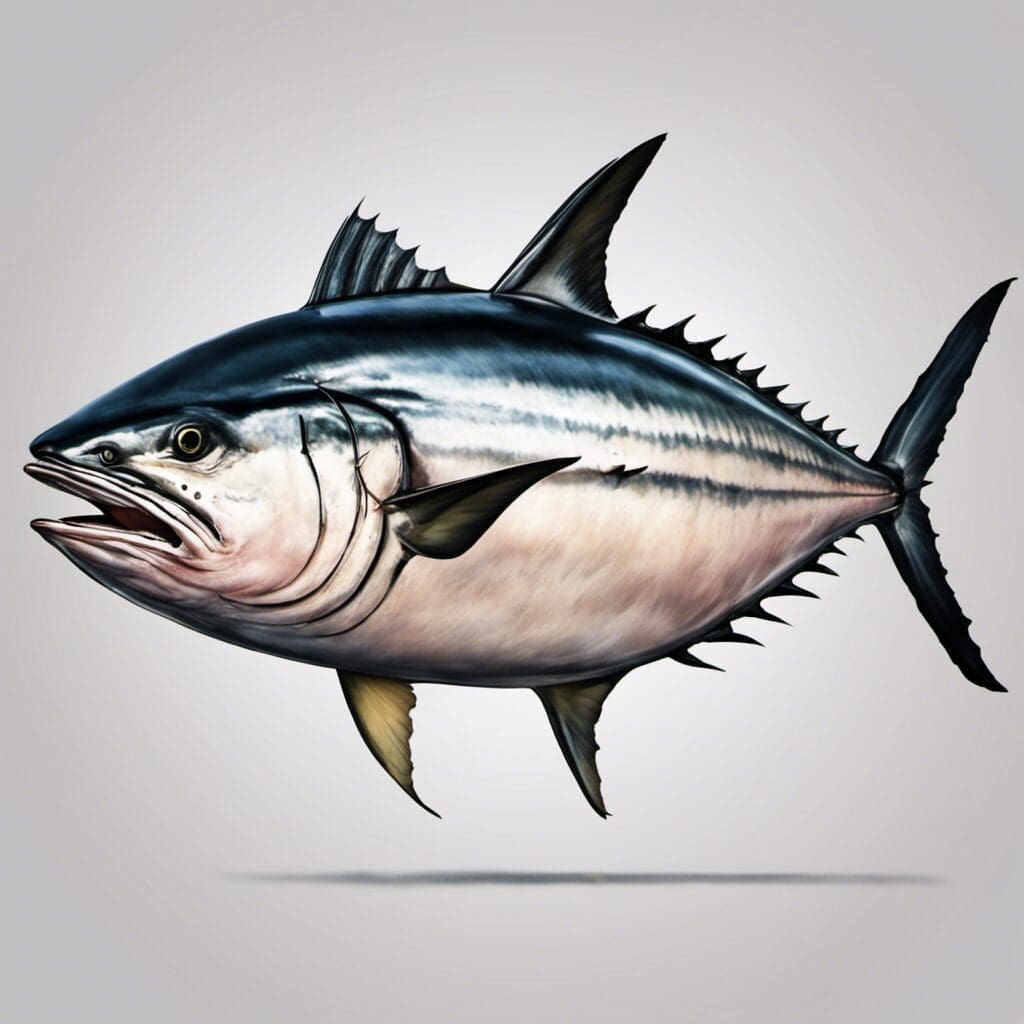Introduction
Also known as the Longfin Tuna, the Albacore (Thunnus alalunga) is a species of tuna that belongs to the Scombridae family. It is praised for its rich flavor and tender texture, making it a favorite in a variety of cuisines worldwide.
Conservation Status
The Albacore currently holds a “Near Threatened” status according to the International Union for Conservation of Nature (IUCN). Efforts to conserve the Albacore population include implementing catch limits, mandated bycatch release, and seasonal fishing restrictions.
Statistics
A table showcasing the Albacore’s statistics is provided below:
| Feature | Average | Range |
|---|---|---|
| Length | 1 metre (3.3 feet) | 0.9 - 1.4 metres (3 – 4.6 feet) |
| Weight | 15.5 kg (34 pounds) | 6 – 40 kg (13 – 88 pounds) |
| Lifespan | 12 Years | N/A |
Distribution
The Albacore can be found in oceans worldwide, excluding the Polar Regions. It tends to migrate across waters, making their distribution somewhat sporadic, but generally follows areas with temperatures in the range of 15.6 – 19.7°C.
Habitats
Albacore Tuna prefer pelagic or open-ocean waters. Typically, they reside in a temperature range between 15.6 – 19.7°C. They are highly migratory species that enjoy depths between 200 – 400 meters.
When and Where to See
The Albacore are highly migratory and their presence in any given region can be seasonal in nature. Typically, you might see them during daylight hours when the water temperatures are close to their preference.
Best Fishing Locations
Top fishing locations for Albacore include:
1. The Mediterranean Sea.
2. The Atlantic Ocean.
3. The Indian Ocean.
4. The Pacific Ocean.
5. The Coral Sea.
6. The Tasman Sea.
7. Kaikoura, New Zealand.
8. Madeira, Portugal
9. The Canary Islands.
10. The Bay of Biscay.
How to Catch
Fishing for Albacore typically involves either trolling with lures or live bait fishing. Due to their migratory nature, the best time to catch them usually depends on the seasonality patterns of the specific region.
Identification Guide
Measuring up to 1.4 meters long, the Albacore has an elongated, fusiform body that is bluish above and silvery below. Practical identification characteristics include elongated pectoral fins and shorter body length than other Tuna species.
Culinary
Albacore is famous for its mild, rich flavor and firm, steak-like texture. You can grill, broil, or pan-fry Albacore steaks. It’s also popular for canning, often labeled as ”white tuna.”
Additional Information
Albacore feed primarily on squid and small fish, with feeding behavior typically consisting of school-based hunting. Their primary natural predator is the Shortfin Mako Shark. The biggest threats to the Albacore population come from overfishing and by-catch.
References and Further Reading
1. FAAO Species Fact Sheets: http://www.fao.org/fishery/species/2493/en.
2. Seafood Source: https://www.seafoodsource.com/seafood-directory/item/albacore-tuna.
Please refer to the above links for further information about this fascinating species

